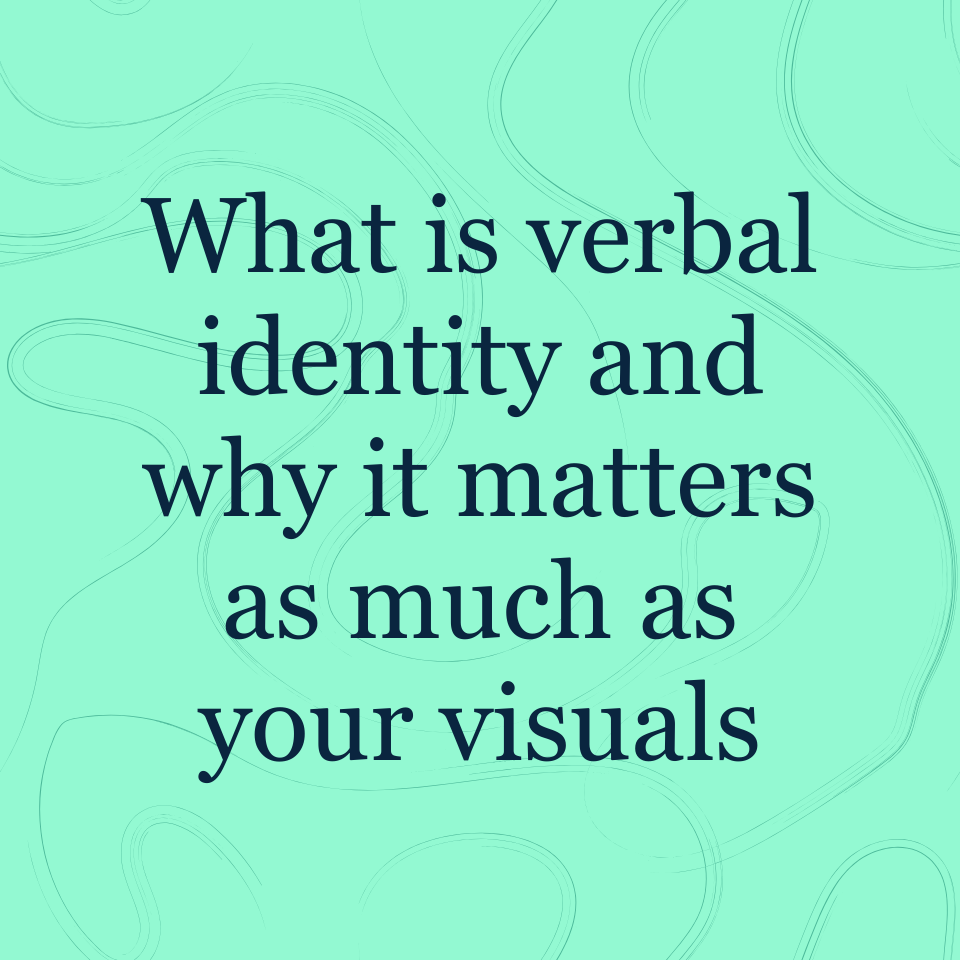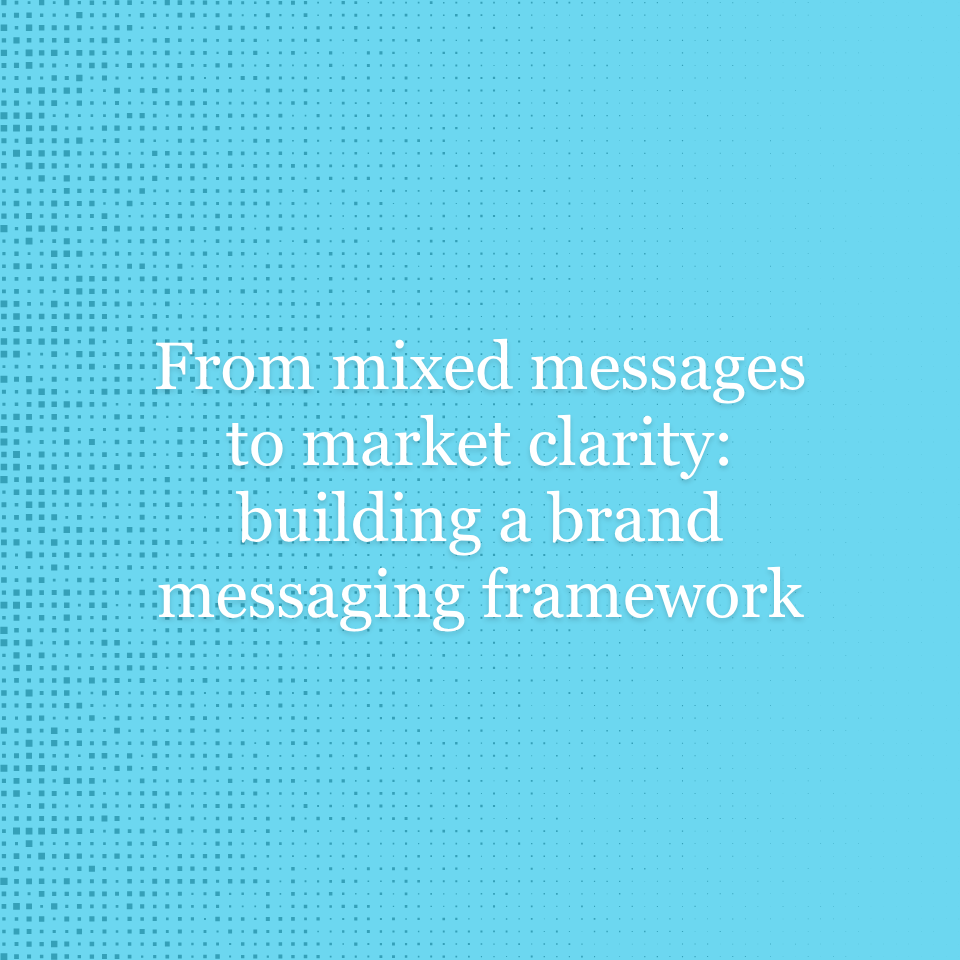Customers today have more options, more information, and more skepticism than ever, and for good reason. In that context, trust has become a brand's most valuable currency, and its biggest risk.
The decline in institutional trust is no longer just a cultural observation. It’s a business reality. According to Edelman and Deloitte, trust is now a core driver of purchase behavior, loyalty, and long-term brand resilience. And yet, too many companies still treat trust as something you say, not something you earn. But in today’s climate, trust has to be lived, not just marketed.
Why Trust is Harder to Earn Today
Trust has always been a foundational part of brand relationships (and all relationships!), but in today’s climate, it’s also one of the hardest elements to build and the easiest to lose. We’re operating in an environment shaped by constant noise, heightened scrutiny, cultural fragmentation, and AI-infused misinformation. Several converging forces are reshaping how trust is built—and how quickly it can erode:
Information overload and misinformation
Any brand today can publish content, and so can anyone impersonating one. With AI-generated articles, deepfake videos, and algorithmic manipulation on the rise, consumers are left to question not just what’s being said, but who’s saying it, and whether it’s real. The result? A pervasive skepticism. If anything can be faked, everything becomes suspect. In this context, trust becomes less about what you say, and more about what you consistently do.
Transparency culture and instant accountability
The internet has collapsed the timeline of reputation. There is no longer such a thing as "off the record" or "behind closed doors." Missteps go viral in minutes. Internal decisions become external narratives. And social media ensures that brands can’t hide behind polished PR anymore. We’ve moved from a world where reputational damage was incremental to one where it’s often explosive. Today’s brands must be prepared to lead with accountability, not spin, because bad behavior is visible, searchable, and unforgettable.
The privacy-personalization paradox
Consumers want better, more personalized experiences. But they’re increasingly anxious about how those experiences are powered. Who has their data? How is it being used? Can they opt out? There’s a growing tension between the convenience people want and the control they feel they’ve lost. Even well-meaning personalization can feel invasive when the trust foundation isn’t there. Without clear boundaries and intentional transparency, even helpful tech can backfire.
Cultural fragmentation and emotional burnout
There’s no longer one cultural narrative; there are hundreds. Different platforms, different values, different interpretations of truth. This fragmentation makes it difficult for brands to build a shared foundation of meaning. Add to that the sheer volume of messages consumers receive each day — from brands, influencers, thought leaders, and causes — and the result is emotional exhaustion. People aren’t just tuning out noise. They’re tuning out connection attempts that don’t feel grounded in something real.
The High Cost of Low Trust
Consider the recent backlash against Duolingo’s “AI-first” pivot. In an attempt to position itself at the forefront of innovation, the company made sweeping internal changes: eliminating contractors, freezing hiring unless AI couldn’t do the job, and making AI fluency a performance requirement for employees. What followed was swift and severe public backlash — from users, creators, and even loyal fans of the brand.
Within days, Duolingo deleted all content from its 6.7 million TikTok followers and 4.1 million Instagram followers — effectively hitting the reset button on years of social media goodwill and community building.
But this wasn’t just a misjudged PR move. It was a rupture of the brand’s emotional contract with its audience. Duolingo built its following on playfulness, relatability, and a deeply human tone. When the brand’s actions suddenly felt cold, corporate, and dismissive of the very people who had made it successful — both internal contractors and external community members — it triggered an identity crisis the algorithm couldn’t solve.
And the real cost? It wasn’t just social media stats. It was brand equity.
When trust is broken:
- Beloved brands become suspect.
- Positive sentiment turns into open criticism.
- Customer loyalty flips into active advocacy against the brand.
Duolingo’s case is a textbook example of what happens when operational decisions are made without considering the brand implications. Because in today’s environment, innovation that isn’t grounded in transparency, humanity, and values alignment reads as careless.
The lesson is clear: You can’t innovate your way out of a trust vacuum.
If trust isn’t built into the foundation of your decisions, especially in moments of change, it will collapse under the weight of scrutiny.
So, What Builds Trust Now?
It’s tempting to talk about “authenticity” and “human connection,” but what actually earns trust when people have been inundated with performative messaging?
Capability
Trust begins with competence. Can your product do what it says it does, consistently, and at a high standard? Can your service team resolve issues quickly and well? Consumers may be skeptical of marketing, but they’re still fiercely loyal to brands that deliver on their core promise. A brilliant brand message means nothing if it’s propping up a weak product. True capability builds the kind of trust that doesn’t need hype to convert.
Reliability
This is where many brands falter. It’s not enough to be able to deliver. You have to actually deliver, repeatedly, under varying conditions. Reliability is about operational consistency: from product launches to billing experiences, all the way through to customer support. The brands that earn trust aren’t the ones that get it right once. They’re the ones that show up, follow through, and recover quickly when they fall short.
Transparency
Today’s consumers don’t just expect openness, they assume access. They want to know what’s happening behind the curtain: how decisions are made, what values guide those decisions, and what a company does when it gets it wrong. Transparency isn’t about oversharing; it means sharing intentionally and honestly. When brands are clear about what they’re doing and why, even when the news isn’t perfect, it creates a foundation of credibility that marketing alone can’t replicate.
Humanity
This is where trust becomes emotional because this comes down to how people are treated, internally and externally. Do you treat your employees like true stakeholders, not liabilities? Do you treat your customers with empathy, not as data points or transactions? When people feel respected — seen, heard, and supported — they develop a deeper connection to the brand. And they give it more grace when things go wrong.
Trust is the Flywheel
For all the conversation about differentiation, brand salience, and customer experience, trust might just be the most powerful multiplier in a company’s growth engine. And unlike trends or flash-in-the-pan tactics, it compounds over time.
When a brand is trusted, everything becomes easier and more effective. Here’s the difference:
Trusted brands can charge more
Trust reduces friction in the buying process. It reassures customers that they’re making the right decision, which means price becomes less of a deciding factor. According to Edelman, 82% of consumers are willing to pay a premium for products and services from brands they trust, even when a lower-cost option is available.
Trusted brands see higher intent and conversion
When consumers feel confident in a brand’s values, delivery, and intentions, they’re more likely to take the next step, whether that’s requesting a demo, making a first purchase, or signing a long-term contract. Trust reduces uncertainty, the ultimate momentum killer.
Trusted brands bounce back faster
Every brand will eventually face a misstep, a misunderstanding, or a moment where they fall short of expectations. But trust acts like a reputational buffer. When trust has been earned over time, customers are more likely to extend grace, wait for the explanation, and give the brand an opportunity to course-correct. Without that foundation, a small misstep can snowball into a full-blown credibility crisis.
Trusted brands turn customers into advocates
Marketing can attract attention, but trust turns customers into amplifiers. When people trust a brand, they don’t just come back, they bring others with them. They refer. They defend. They promote. In an era of declining ad performance and rising acquisition costs, trust-driven word-of-mouth is one of the most powerful (and cost-effective) growth channels.
The Takeaway
To build a brand that lasts, you need to treat trust like the asset it is: measurable, managed, and deeply embedded across your strategy. Because when everything else is uncertain, brands that can be counted on will be the ones that win.
Unsure how to build that trust through your brand? Let’s chat.





